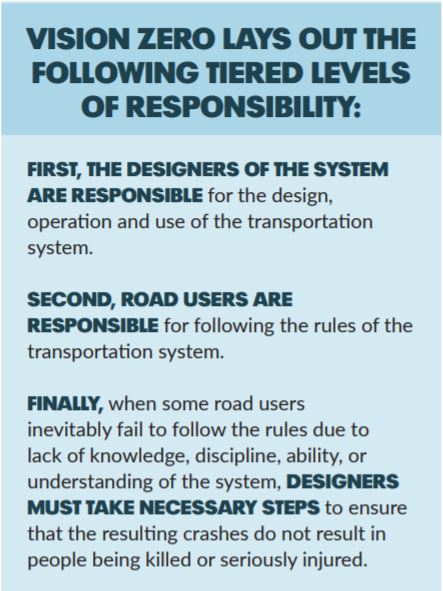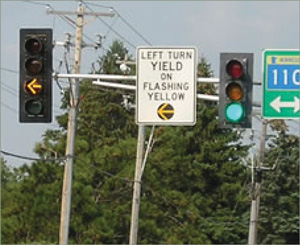By Don Kostelec
October 2, 2019
“Engineers shall hold paramount the safety, health and
welfare of the public…” – Canon 1, ASCE Code of Ethics.
Jim Tymon, Executive Director of AASHTO, tweeted on September 23: “The top priority for state DOTs & @aashtospeaks has been – and will always remain – the safety of all #transportation system users.”
The horse came up lame before Tymon’s memo reached Idaho, apparently.
A year ago a motorcyclist was killed as he rounded a curve in Boise’s I-184 as is approaches downtown. He fell in a gap of the structure between the eastbound and westbound lanes and died as a result of the fall. Investigators determined he was traveling at an unsafe speed when he crashed, the results of which are amplified by the curve in the highway and the gap between the two structures.
Engineers shall hold paramount the safety, health and welfare of the public.
The victim’s brother has come to the fore with a solution: Putting a net or similar barrier in the gap so when people do crash, the result of the crash is not as catastrophic. The Idaho Press article notes there are several similar crashes in this location.
The victim’s brother said: “Regardless if someone hits some fencing, there is going to be injuries, but there is a better chance they will survive the accident. They are not going to fall over near the skate park. With three or four people going over in that general area, in the past 10 to 12 years, it’s time to get something up there.”
That’s Vision Zero to the core. And the victim’s brother understands it better than the Idaho Transportation Department.
When humans fail, the transportation system should not. That’s Vision Zero boiled down to its most basic concept.
Engineers shall hold paramount the safety, health and welfare of the public.
Unfortunately, the Idaho Transportation Department responds with what we are used to from nearly every state DOT: “The situation, which has been the case several previous times, is that the operator of the motorcycle was exceeding the speed limit and he was unable to maintain his lane…We did confirm based on what the speed limit is signed for, the roadway is adequately designed.”
In other words: Be perfect on our roads, or your death is on you. The dead man’s family must feel so comforted by ITD’s position.
That’s the opposite of Vision Zero and explains so much about why the United States leads the world’s wealthy nations in traffic deaths.
System designers are responsible for the design of the system, for it to be safe, and for it to account for human errors. When humans do fail, it is up to the system designers to then fix the system, not blame the user.

In this case on I-184, there is a track record of crashes due to speeding and people falling into this gap. How can it be adequately designed if that’s the case?
And, even if it is does meet federal interstate design guidance, why does ITD expect perfection from drivers when there appears to be a solution that could reduce severity of a pattern of crashes in that location? Just because something meets a standards does not mean it is safe. Any honest engineer will tell you that.
Engineers shall hold paramount the safety, health and welfare of the public.
Contrast ITD’s approach with Idaho’s neighbor, Washington State DOT. There, Director Roger Millar is trying to steer that ship in a different direction to reorient the agency toward a Vision Zero philosophy. (Yeah, I see my Washington folks who are still frustrated. It’s hard to steer a ship in a different direction when engineers have spent decades building the pier around it. Folks like Millar and Idaho’s own Barb Chamberlain are plugging away at it.).
WSDOT’s Gray Notebook, the agency’s quarterly performance and accountability report, showcases their recognition that out-sourcing traffic safety to human behavior is a losing proposition if safety is their top priority.
The March 2018 edition of the Gray Notebook has a statement everyone should sit down to read:
- “While WSDOT does not typically address the behavioral aspects of impaired and distracted driving, the agency strives to design a transportation system that reduces the likelihood of fatality when mistakes occur.”
Read it again, then compare that to ITD’s stance. Then send a thank you tweet to Roger, Barb, and anyone else you can find at WSDOT.
Jim Tymon should make that AASHTO’s explicit safety message.
Engineers shall hold paramount the safety, health and welfare of the public.
More than 2,000 miles away in Florida, the Sunshine State’s DOT apparently told Tymon to stick his message where the sun doesn’t shine.
In this case, it’s Flashing Yellow Arrows—the latest application that makes traffic engineers giddy with excitement as they to try to shave a few seconds off a motorist’s experience in the name of safety.
Flashing Yellow Arrows (FYAs) are really just a new way to allowing protected-permissive turns. The trend, however, has been for engineers to think flashing yellow arrows are a magic safety bullet.
In a rare instance, the Florida motoring community fought back against FYAs.
A story ran in Florida where drivers were begging Florida DOT to remove them, saying they felt unsafe using them.
FDOT’s message to drivers via WFTS in the Tampa Bay region: Do better!
“FDOT says it is up to drivers to be more careful when yielding to oncoming traffic. FDOT added the blinking yellow left turn signals to several intersections around Florida and across Tampa Bay to help reduce congestion.”
If you ever wondered if AASHTO-member DOTs prioritized the movement of cars over the safety of people, FDOT just confirmed it for you.
FDOT could use a little WSDOT influence.
Engineers shall hold paramount the safety, health and welfare of the public.
We have a long way to go.

